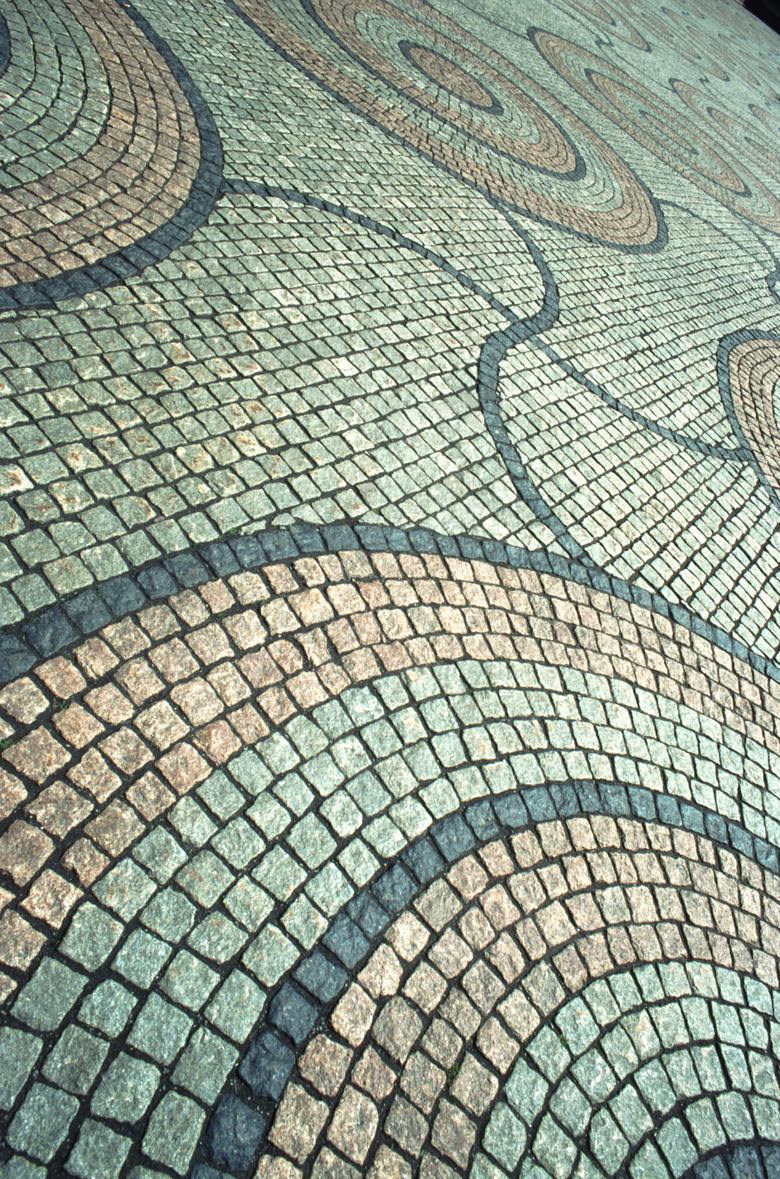Who Invented Tessellations?
Tessellation is another word for tiling. A tessellation is created when you fit individual tiles together to fill a flat space like a floor, wall or ceiling without gaps or overlaps. Although we do not know when tiles were first invented, the Tile Association notes that pieces of tiles dating from between 12,000 and 18,000 years ago have been found in sites located along the Nile River. Due to the work of graphic artist M.C. Escher and mathematician Sir Roger Penrose, the word tessellation is well known today, and is used to describe patterns in both art and math.
Origin of the Word
Origin of the Word
The Oxford Dictionary says that tessellate is derived from the Latin word tessera which refers to "a small block of stone, tile, glass or other material used in the construction of a mosaic."
Is it Art or Is it Math?
Is it Art or Is it Math?
While we will never know who put together the first tessellation, the work of Dutch graphic artist M. C. Escher and mathematician Sir Roger Penrose brought attention to the concept. Tessellations in art are usually shapes, patterns or figures that can be repeated to create a picture without any gaps or overlaps. In math, according to Drexel University, tessellations are recognized as coverings of a plane or surface without any gaps in the "tiling."
Artist M.C. Escher
Artist M.C. Escher
Dutch graphic artist Maurits Cornelis Escher, who lived from June 17, 1898 to March 27, 1972, is famous for his work with mathematical prints using tessellations. Escher originally entered college to study architecture, but became so intrigued with how math and art interplay that he became a graphic artist. Many of his followers consider him to be the 20th century inventor of tessellations viewed as an art form. Although he experimented with different ways to make a tessellation, in Escher's work, tessellations follow only one repeating pattern that can be manipulated for effect.
Mathematician Sir Roger Penrose
Mathematician Sir Roger Penrose
Sir Roger Penrose, a British professor of mathematics at Oxford University, was born August 8, 1931. His work with world-renown scientist Stephen Hawking proved the existence and nature of black holes. This led to an early examination of space "tiling." As he continued to study, he compared his work on tiling to the art work of M.C. Escher. This led Penrose to discover Penrose tiling, "in which a set of shapes can be used to cover a plane without using a repeating pattern." His fascination with the paintings of M.C. Escher also led Penrose to work with his father to create the "Penrose staircase and the impossible triangle known as the tribar." Because of his exploration of new ideas and uses for tessellation patterns, Penrose is sometimes considered the modern inventor of math tessellations.
References
- California State University: Tessellations
- Encyclopedia Britannica: M.C. Escher
- Encyclopedia Britannica: Sir Roger Penrose
- California State University: Art and Science
- The Incredible Art Department: The Incredible Tessellations Page
- Drexel University Math Forum: What is a Tessellation?
- M.C. Escher the Official Website: Biography
Cite This Article
MLA
Robinson, Patrice D.. "Who Invented Tessellations?" sciencing.com, https://www.sciencing.com/who-invented-tessellations-12759386/. 18 December 2013.
APA
Robinson, Patrice D.. (2013, December 18). Who Invented Tessellations?. sciencing.com. Retrieved from https://www.sciencing.com/who-invented-tessellations-12759386/
Chicago
Robinson, Patrice D.. Who Invented Tessellations? last modified March 24, 2022. https://www.sciencing.com/who-invented-tessellations-12759386/
